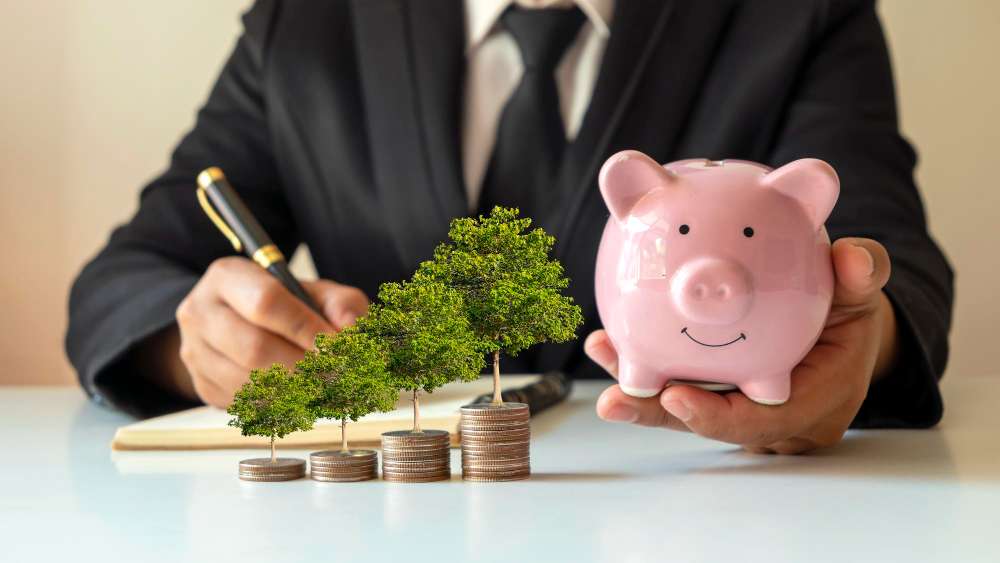A sustainable financial system is one that is sound – economically, socially and environmentally. The goal of a a system which has sustainable finance at its core is to meet current and future needs while protecting the environment. Sustainable practices keep our planet healthy and clean for future generations. However, there is still a long way to go before the global economy transitions entirely to a green, environmentally friendly and financially sound system. Although big banks are embracing sustainable finance and investing, change is slow. But why is this? Although big banks are embracing sustainable investing, change is slow. But why is this?
Michael Eckhart, former global head of environmental finance for Citigroup and currently an adjunct professor of international and public affairs at Columbia University has the answer: “The greatest challenge to addressing climate change is institutional inertia that can take 25 years to change,” Eckhart said. “You can’t just order somebody to consider environment, social, and governance and expect them to carry it out perfectly every time.”
Case in point – the green bond market makes up to 1.5% of the total bond market, with current cumulative issuance at ~$1.75 trillion. Green bonds are bonds that are publicly traded on stock markets with a focus on environmental sustainability goals such as climate change mitigation, energy conservation or reducing resource consumption. Investors can buy green bonds to support environmental projects around the world that they believe will help save the environment.
The Climate Bond Initiative is campaigning endlessly to drive change here, working tirelessly to demonstrate the opportunities available to investors and achieve their target of mobilise $5 trillion of climate bonds per year by 2025.
The long road to transition and sustainable finance
In recent years, the financial sector has been transitioning away from traditional banking and investing practices towards more sustainable and ethical alternatives. Goldman Sachs, for example, is allocating $750 billion toward sustainable finance by 2030 and is a third of the way to reaching its goal. Meanwhile Citigroup has committed $1 trillion to sustainable finance by 2030.
Banking has become an exciting field for innovative ideas and sustainable finance practices. There are several new, sustainable banking and investing practices that have been developed to help the financial sector meet its global sustainability goals.
These practices help the financial sector meet its global sustainability goals by reducing its carbon footprint and promoting energy conservation. Other sustainable banking practices include helping consumers to reduce waste, to increase transparency and to reduce environmental transaction costs.
A sustainable financial system requires consumers, businesses and government agencies to make responsible decisions of many kinds. Some are purely financial, such as whether to accept investments from or make investments in countries, institutions or individuals with poor environmental records (much of the world’s investible funds come from oil money), or the opposite – actively seeking investments from or making investments in countries, organisations or individuals with good environmental records. Or they may be operational ones, such as finding less energy-intensive ways of running offices or information technology.
Banking has become an exciting field for innovative ideas and sustainable practices. There are several powerful, sustainable banking and investing practices that have been developed to help the financial sector meet its global sustainability goals. These practices include digitalisation (to reduce use of paper, meetings etc.), homeworking (reducing transport and office energy use) and enforcing greenness in their supply chain (e.g. use of green electricity in information technology.
The green movement has inspired many new sustainable banking ideas such as green finance or green bonds however there is currently only one green bank in the U.S., with others dotted around the rest of the world ncluding in Australia, Germany, India, Netherlands, Sweden and the UK.
The blight of greenwashing in the banking sector
Progress towards a green financial system may be slow, but is further impeded by greenwashing. Just last week we reported on HSBC’s sustainable bond scandal. Of course, there have been others including Nutmeg, and greenwashing tactics like these only serve to bring green investing into disrepute.
The goal of a sustainable financial system is to meet current and future needs while protecting the environment. As of now, the financial sector is in the earliest stages of transitioning towards a more sustainable model, with many new ideas and practices still in development relating to more sustainable finance. These include consumerism, investing and government sectors as well as small businesses in developing countries where unsustainable financial practices were previously the norm, but are now being replaced by far more ethical choices.
But change in financial behemoths is slow. People, data, systems, strategies, regulations and culture all need to change. With the clock ticking, perhaps it is time for the giants to shake off their shackles and accelerate their move towards a green financial system.
Access our ESG reports on the following banks:
– JPMorgan Chase & Co. ESG report
– Goldman Sachs Group ESG report
– Wells Fargo & Co. ESG report
Get in touch to find out about our work in supporting the financial sector in its transition towards a more sustainable model
